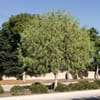Life Span
Perennial
Perennial
Type
Broadleaf Evergreen
Flowering Plants, Fruits, Trees
Origin
Southeastern Asia, Melanesia, Micronesia, Polynesia, Australia
Central Asia
Types
Bigleaf hydrangea, Hortensia, Smooth hydrangea, Oakleaf hydrangea, Annabelle
Aceymac apple, Bailey Sweet apple, Dabinett apple, Nehou apple
Habitat
Forest edges, Hillside, Woods
Hillside
USDA Hardiness Zone
10-15
5-8
AHS Heat Zone
Not Available
9-1
Sunset Zone
21,22
A1, A2, A3, 8, 9, 10, 11, 12, 13, 14, 15, 16, 17, 18, 19, 20, 21, 22, 23, 24
Habit
Upright/Erect
Oval or Rounded
Flower Color
White, Purple
White
Flower Color Modifier
Bicolor
Not Available
Fruit Color
Red
Green, Red
Leaf Color in Spring
Red, Purple, Dark Green, Pink, Dark Red
Dark Green
Leaf Color in Summer
Red, Purple, Dark Green, Pink, Dark Red
Green
Leaf Color in Fall
Red, Purple, Dark Green, Pink, Crimson, Dark Red
Brown, Green, Light Yellow
Leaf Color in Winter
Red, Purple, Dark Green, Pink, Crimson, Dark Red
Not Available
Leaf Shape
Oblovate
Oblong
Plant Season
Spring, Summer, Fall, Winter
Spring
Sunlight
Full Sun, Partial Sun, Partial shade
Full Sun, Partial shade
Growth Rate
Not Available
Medium
Type of Soil
Loam, Sand
Loamy
The pH of Soil
Neutral, Alkaline
Neutral
Soil Drainage
Average
Well drained
Bloom Time
Late Spring, Early Summer, Summer
Fall, Summer
Tolerances
Not Available
Drought
Where to Plant?
Container, Ground
Ground
How to Plant?
Seedlings, Stem Planting
Grafting, Seedlings, Transplanting
Plant Maintenance
Medium
Medium
Watering Requirements
Not Available
Medium
In Summer
Average Water
Lots of watering
In Spring
Moderate
Moderate
In Winter
Average Water
Average Water
Soil pH
Neutral, Alkaline
Neutral
Soil Type
Loam, Sand
Loamy
Soil Drainage Capacity
Average
Well drained
Sun Exposure
Full Sun, Partial Sun, Partial shade
Full Sun, Partial shade
Pruning
Remove damaged leaves, Remove dead branches, Remove dead leaves
Prune when plant is dormant, Remove dead or diseased plant parts
Fertilizers
All-Purpose Liquid Fertilizer
All-Purpose Liquid Fertilizer
Pests and Diseases
Red blotch
Aphids, Canker, Caterpillars, Powdery mildew, Root rot
Plant Tolerance
Not Available
Drought
Flowers
Insignificant
Yes
Flower Petal Number
Single
Single
Foliage Texture
Coarse
Medium
Foliage Sheen
Not Available
Matte
Attracts
Bees, Flies
Birds
Allergy
Chest tightness, Diarrhea, Dizziness, Nausea, Vomiting
Mouth itching, Throat itching
Aesthetic Uses
Not Available
Not Used For Aesthetic Purpose
Beauty Benefits
Not Available
Not Available
Edible Uses
Not Available
Yes
Environmental Uses
Air purification
Air purification
Medicinal Uses
Fever, Kidney problems, Urinary tract problems
Cancer, constipation, Diabetes, Diarrhea, Dysentry, Fever, Heart problems, Tooth ache
Part of Plant Used
Flowers, Root
Fruits
Other Uses
Not Available
Used As Food, Wood is used for making furniture
Used As Indoor Plant
Not Available
No
Used As Outdoor Plant
Yes
Yes
Garden Design
Container, Cutflower, Feature Plant, Foundation, Houseplant, Tropical
Fruit / Fruit Tree, Shade Trees, Showy Tree
Botanical Name
CORDYLINE fruticosa
Malus domestica
Common Name
Good Luck Tree, Hawaiian Ti, Tiplant
Apple Tree
In Hindi
Hydrangea
सेब का वृक्ष
In German
Hortensie
Apfelbaum
In French
Hortensia
Pommier
In Spanish
Hortensia
Manzano
In Portuguese
Hortênsia
Macieira
In Polish
Hortensja
jabłoń
Phylum
Not Available
Magnoliophyta
Class
Not Available
Magnoliopsida
Order
Not Available
Rosales
Family
Liliaceae
Rosaceae
Genus
Not Available
Malus
Clade
Not Available
Angiosperms, Eudicots, Rosids
Tribe
Not Available
Not Available
Subfamily
Not Available
Not Available
Number of Species
Not Available
Not Available
Properties of Good Luck Tree and Apple Tree
Wondering what are the properties of Good Luck Tree and Apple Tree? We provide you with everything About Good Luck Tree and Apple Tree. Good Luck Tree doesn't have thorns and Apple Tree doesn't have thorns. Also Good Luck Tree does not have fragrant flowers. Good Luck Tree has allergic reactions like Chest tightness, Diarrhea, Dizziness, Nausea and Vomiting and Apple Tree has allergic reactions like Chest tightness, Diarrhea, Dizziness, Nausea and Vomiting. Compare all the properties and characteristics of these two plants. Find out which of these plant can be used as indoor plant. If you are interested to decorate your house and garden, find out aesthetic uses, compare them and select the plant which will beautify your surrounding. Along with beautification, try comparing medicinal and edible uses of Good Luck Tree and Apple Tree and you can choose the plant having best and most benefits.
Season and Care of Good Luck Tree and Apple Tree
Season and care of Good Luck Tree and Apple Tree is important to know. While considering everything about Good Luck Tree and Apple Tree Care, growing season is an essential factor. Good Luck Tree season is Spring, Summer, Fall and Winter and Apple Tree season is Spring, Summer, Fall and Winter. The type of soil for Good Luck Tree is Loam, Sand and for Apple Tree is Loamy while the PH of soil for Good Luck Tree is Neutral, Alkaline and for Apple Tree is Neutral.
Good Luck Tree and Apple Tree Physical Information
Good Luck Tree and Apple Tree physical information is very important for comparison. Good Luck Tree height is 320.00 cm and width 165.00 cm whereas Apple Tree height is 25.00 cm and width 20.00 cm. The color specification of Good Luck Tree and Apple Tree are as follows:
Good Luck Tree flower color: White and Purple
Good Luck Tree leaf color: Red, Purple, Dark Green, Pink and Dark Red
Apple Tree flower color: White
- Apple Tree leaf color: Dark Green
Care of Good Luck Tree and Apple Tree
Care of Good Luck Tree and Apple Tree include pruning, fertilizers, watering etc. Good Luck Tree pruning is done Remove damaged leaves, Remove dead branches and Remove dead leaves and Apple Tree pruning is done Prune when plant is dormant and Remove dead or diseased plant parts. In summer Good Luck Tree needs Average Water and in winter, it needs Average Water. Whereas, in summer Apple Tree needs Lots of watering and in winter, it needs Average Water.


